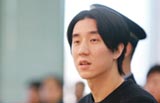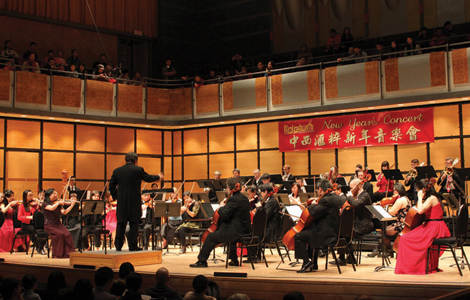Going for China's glam market
Updated: 2015-01-16 12:02
By Zhang Yuwei(China Daily USA)
|
||||||||
 |
|
Peter Thomas Roth, founder and CEO of Peter Thomas Roth Clinical Skin Care, at the Rose Stem Cell Bio-Repair Gel Mask launch in Shanghai last year. Provided to China Daily |
Uniqueness sells
When Roth talks about his products, he brings in his own experience, which is how his passion for establishing a skincare brand started. Born to a family that had owned two spa resorts in Hungary, Roth, the first generation child of Hungarian parents who moved to the United States, launched his own brand under his name in 1993 to share his experience of treating his own skin problems, such as acne.
"I think I have similar skin type to Asian skin, so if I am happy with the products I make, then Chinese people with a similar skin type will like them, too," said Roth.
PTR's products now include cleansing, moisturizer and mask, a full range of skincare categories. In 2007, the brand entered Hong Kong before its launch in other Chinese cities in 2010. Within four years, it was being sold in more than 300 Sephora stores - a French brand and chain of cosmetics stores - in China, where PTR is ranked the No 1 exclusive brand.
PTR is sold in more than 25 Chinese cities, including first tier cities like Beijing and Shanghai. After a successful launch of its $45 Rose Stem Cell Bio-Repair Gel Mask in China last year, the company will bring its make-up product - Lashes-to-Die for Platinum - into the Chinese market in March.
Roth said the beauty consumer trend in China surprisingly gives them a better idea of what kind of products they should consider launching within and beyond the US.
"The Rose Mask was one of those we created for China but since it was so popular we launched it worldwide," said Roth.
Echoing Roth's comments, his wife Noreen Donovan Roth, who is managing director of PTR, said Chinese beauty products consumers are also leading the trend globally.
"What we are seeing is that our global customers in the US and elsewhere look toward what's going on in China," she said. "Our products that become real superstars in China - then all of sudden it's contagious - and they become huge all over the world," she added.
Noreen, who visits China for business about three times a year, said Chinese customers are getting more sophisticated when it comes to choosing skincare products.
"They do their research well; Forty percent of the daily visitors to our website are Chinese from China," she said.
About 60 percent of Chinese consumers had bought foreign brand cosmetic products in 2013, according to Statista.com, an online statistics portal.
Oscar Yuan, a New York-based partner of global marketing consultancy Millward Brown Vermeer, said the Chinese consumers' savviness makes this crowded market more competitive.
"They will be looking for unique and different brands that deliver on specific needs, both functional and emotional," said Yuan. "Beauty brands will have to start developing deeper and deeper understandings of the Chinese consumer, and perhaps start creating unique offerings for the market, rather than simply introducing brands they are selling elsewhere."
Waldemar Jap, a partner at the Boston Consulting Group in Hong Kong, said as Chinese consumers are becoming more knowledgeable, they trade up to the high-end brands backed by scientific claims or trade-down to more mass brands where they go for more basic functionalities.
"Western brands have the advantage of R&D investment to support their claims and strong advertising/marketing muscle. Nonetheless, Chinese consumers have become more sophisticated and often conduct their own research to assess how different brands/products fit with their skin," said Jap.
Most Viewed
Editor's Picks

|

|

|

|

|

|
Today's Top News
HK donor gives $1 million to NYPD officers' families
Congresswoman warns of immigration scams
Silicon Valley will mark Spring Festival
Beverly Hills rolls out red carpet for Chinese tourists
US rebound should lift China
Miami to China: Come see about us
Teens to face trial in killing of Chinese student
Chinese piece headlines Carnegie recital
US Weekly

|

|















